 Backend Development
Backend Development Python Tutorial
Python Tutorial What are the best practices for implementing time series analysis with Django Prophet?
What are the best practices for implementing time series analysis with Django Prophet?
Django Prophet is a time series analysis tool based on Python. Combined with the Django framework, it can easily perform time series analysis and prediction. This article will introduce the best practices of Django Prophet and give specific code examples.
1. Installation and configuration
First, we need to install Django Prophet and its dependent libraries. It can be installed through the pip command:
pip install django-prophet forecaster
Next, add the following configuration in the settings.py file of the Django project:
INSTALLED_APPS = [
...
'prophet',
...
]
PROPHET = {
'MODEL_PATH': os.path.join(BASE_DIR, 'model'), # 模型路径
'FORECAST_PATH': os.path.join(BASE_DIR, 'forecast'), # 预测结果路径
}In the above configuration, we specify the model and prediction results Storage path.
2. Data preparation and import
Before conducting time series analysis, we need to prepare the data and import it into the Django database. You can choose CSV format or import data through database query. The following is an example model class for storing time series data:
from django.db import models
class TimeSeriesData(models.Model):
date = models.DateField()
value = models.FloatField()Through Django's data migration function, the model class can be mapped to a database table:
python manage.py makemigrations python manage.py migrate
3. Time Series Analysis
Next, we can use Django Prophet for time series analysis. The following is a sample view function:
from django.shortcuts import render
from prophet import Prophet
def analyze(request):
data = TimeSeriesData.objects.all().order_by('date')
dates = [item.date for item in data]
values = [item.value for item in data]
df = pd.DataFrame({'ds': dates, 'y': values})
m = Prophet()
m.fit(df)
future = m.make_future_dataframe(periods=365)
forecast = m.predict(future)
forecast_data = forecast[['ds', 'yhat', 'yhat_lower', 'yhat_upper']]
return render(request, 'analyze.html', {'forecast_data': forecast_data})The above code first obtains the time series data from the database and converts it into a Pandas DataFrame object. Then, create a Prophet model and train it using the data.
Next, we use the make_future_dataframe function to generate the time range that needs to be predicted, and use the predict function to predict. The prediction results are stored in the forecast object.
Finally, we pass the prediction results to the template analyze.html for display.
4. Template display
In the template analyze.html, we can use the following code to display the prediction results:
{% for item in forecast_data %}
<p>Date: {{ item.ds }}</p>
<p>Predicted Value: {{ item.yhat }}</p>
<p>Lower Bound: {{ item.yhat_lower }}</p>
<p>Upper Bound: {{ item.yhat_upper }}</p>
{% endfor %}The above code uses a for loop to traverse the prediction results and display Date, predicted value, and upper and lower bounds.
Summary:
Through the above steps, we can implement time series analysis based on Django Prophet. This process includes installation and configuration, data preparation and import, time series analysis, and template presentation. By properly configuring parameters and models, we can obtain more accurate time series predictions.
It should be noted that the above example uses a simple linear model. For complex time series, the prediction accuracy can be improved by adjusting the parameters of the Prophet model and adding feature engineering.
The above is the detailed content of What are the best practices for implementing time series analysis with Django Prophet?. For more information, please follow other related articles on the PHP Chinese website!
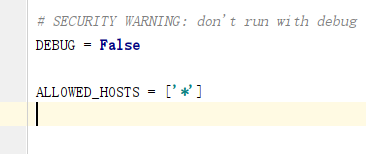 怎么将Django项目迁移到linux系统中Jun 01, 2023 pm 01:07 PM
怎么将Django项目迁移到linux系统中Jun 01, 2023 pm 01:07 PMDjango项目配置修改我们需要把原先的Django项目进行修改才能更好地进行项目迁移工作,首先需要修改的是settings.py文件。由于项目上线之后不能让用户看到后台的运行逻辑,所以我们要把DEBUG改成False,把ALLOWED_HOSTS写成‘*’,这样是为了允许从不同主机进行访问。由于linux中如果不加这句可能会出现文件找不到的情况,所以我们要把模板的路径进行拼接。由于做Django项目肯定进行过数据库的同步,所以我们要把migrations
 centos+nginx+uwsgi部署django项目上线的方法May 15, 2023 am 08:13 AM
centos+nginx+uwsgi部署django项目上线的方法May 15, 2023 am 08:13 AM我django项目叫yunwei,主要app是rabc和web,整个项目放/opt/下如下:[root@test-codeopt]#lsdjango_virtnginxredisredis-6.2.6yunwei[root@test-codeopt]#lsyunwei/manage.pyrbacstatictemplatesuwsgiwebyunwei[root@test-codeopt]#lsyunwei/uwsgi/cut_log.shloguwsgi.iniuwsgi.loguwsgi.p
 Django框架中的数据库迁移技巧Jun 17, 2023 pm 01:10 PM
Django框架中的数据库迁移技巧Jun 17, 2023 pm 01:10 PMDjango是一个使用Python语言编写的Web开发框架,其提供了许多方便的工具和模块来帮助开发人员快速地搭建网站和应用程序。其中最重要的一个特性就是数据库迁移功能,它可以帮助我们简单地管理数据库模式的变化。在本文中,我们将会介绍一些在Django中使用数据库迁移的技巧,包括如何开始一个新的数据库迁移、如何检测数据库迁移冲突、如何查看历史数据库迁移记录等等
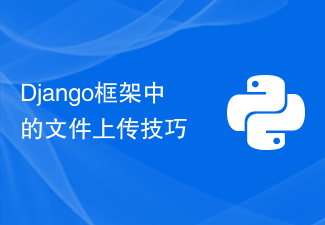 Django框架中的文件上传技巧Jun 18, 2023 am 08:24 AM
Django框架中的文件上传技巧Jun 18, 2023 am 08:24 AM近年来,Web应用程序逐渐流行,而其中许多应用程序都需要文件上传功能。在Django框架中,实现上传文件功能并不困难,但是在实际开发中,我们还需要处理上传的文件,其他操作包括更改文件名、限制文件大小等问题。本文将分享一些Django框架中的文件上传技巧。一、配置文件上传项在Django项目中,要配置文件上传需要在settings.py文件中进
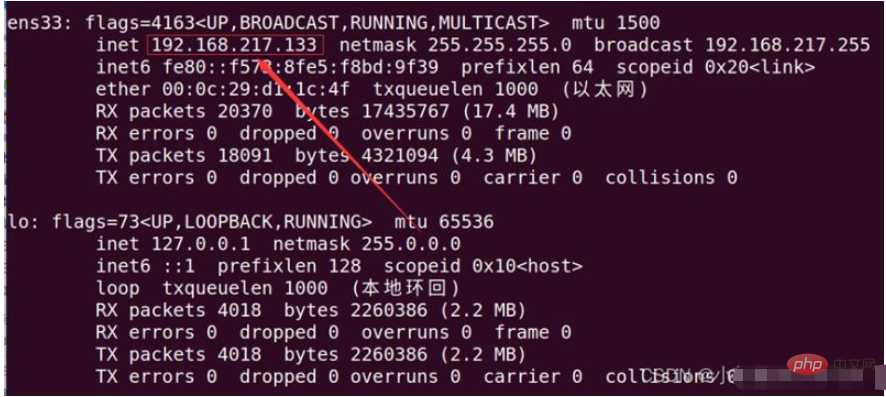 如何用nginx+uwsgi部署自己的django项目May 12, 2023 pm 10:10 PM
如何用nginx+uwsgi部署自己的django项目May 12, 2023 pm 10:10 PM第一步:换源输入命令换掉Ubuntu的下载源sudonano/etc/apt/sources.list将以下全部替换掉原文件,我这里用的是阿里的源,你也可以换其他的。debhttp://mirrors.aliyun.com/ubuntu/bionicmainrestricteddebhttp://mirrors.aliyun.com/ubuntu/bionic-updatesmainrestricteddebhttp://mirrors.aliyun.com/ubuntu/bionicunive
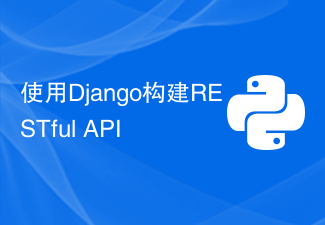 使用Django构建RESTful APIJun 17, 2023 pm 09:29 PM
使用Django构建RESTful APIJun 17, 2023 pm 09:29 PMDjango是一个Web框架,可以轻松地构建RESTfulAPI。RESTfulAPI是一种基于Web的架构,可以通过HTTP协议访问。在这篇文章中,我们将介绍如何使用Django来构建RESTfulAPI,包括如何使用DjangoREST框架来简化开发过程。安装Django首先,我们需要在本地安装Django。可以使用pip来安装Django,具体
 使用Python Django框架构建博客网站Jun 17, 2023 pm 03:37 PM
使用Python Django框架构建博客网站Jun 17, 2023 pm 03:37 PM随着互联网的普及,博客在信息传播和交流方面扮演着越来越重要的角色。在此背景下,越来越多的人开始构建自己的博客网站。本文将介绍如何使用PythonDjango框架来构建自己的博客网站。一、PythonDjango框架简介PythonDjango是一个免费的开源Web框架,可用于快速开发Web应用程序。该框架为开发人员提供了强大的工具,可帮助他们构建功能丰
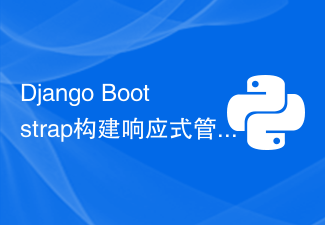 Django+Bootstrap构建响应式管理后台系统Jun 17, 2023 pm 05:27 PM
Django+Bootstrap构建响应式管理后台系统Jun 17, 2023 pm 05:27 PM随着互联网技术的快速发展和企业业务的不断扩展,越来越多的企业需要建立自己的管理后台系统,以便于更好地管理业务和数据。而现在,使用Django框架和Bootstrap前端库构建响应式管理后台系统的趋势也越来越明显。本文将介绍如何利用Django和Bootstrap构建一个响应式的管理后台系统。Django是一种基于Python语言的Web框架,它提供了丰富的功


Hot AI Tools

Undresser.AI Undress
AI-powered app for creating realistic nude photos

AI Clothes Remover
Online AI tool for removing clothes from photos.

Undress AI Tool
Undress images for free

Clothoff.io
AI clothes remover

AI Hentai Generator
Generate AI Hentai for free.

Hot Article

Hot Tools

VSCode Windows 64-bit Download
A free and powerful IDE editor launched by Microsoft

PhpStorm Mac version
The latest (2018.2.1) professional PHP integrated development tool

DVWA
Damn Vulnerable Web App (DVWA) is a PHP/MySQL web application that is very vulnerable. Its main goals are to be an aid for security professionals to test their skills and tools in a legal environment, to help web developers better understand the process of securing web applications, and to help teachers/students teach/learn in a classroom environment Web application security. The goal of DVWA is to practice some of the most common web vulnerabilities through a simple and straightforward interface, with varying degrees of difficulty. Please note that this software

Zend Studio 13.0.1
Powerful PHP integrated development environment

EditPlus Chinese cracked version
Small size, syntax highlighting, does not support code prompt function





